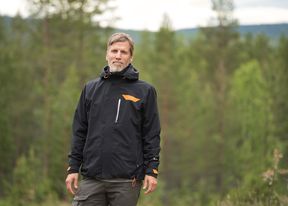Economist: A natural resource tax on hydropower would generate revenue and improve the state of the environment

The European Union's biodiversity strategy aims to restore 25,000 river kilometers to their natural state. In Finland, this could mean restoring around 750 river kilometers. To achieve this goal, part of the hydropower production is lost, which will cause costs. To distribute these costs more evenly, Iivo Vehviläinen, Professor of Practice at the Department of Economics, proposes a new natural resource tax that hydropower producers would pay for their use of water in hydropower production.
‘A natural resource tax paid by the hydropower producers would increase the government’s fiscal latitude when decisions are made on how to share the costs, previously paid by nature, among different actors in society’, says Vehviläinen.
At present, Finnish government pays direct compensations to an electricity producer who loses its hydropower production. Consumers, on the other hand, pay to all electricity producers through higher electricity prices that result from lower production. Higher prices could reduce the acceptability of stricter environmental regulations and raise questions about equity. That's why, according to Vehviläinen, it would be critical to carefully plan how to distribute the costs and benefits of improving the ecological status of rivers between consumers and producers.
The natural resource tax suggested by Vehviläinen is one way to balance these costs. At the same time, it would bring additional tax revenue to the state coffers. Legal basis for the economic and fiscal measures to reduce harm to nature is provided by the EU law Polluter Pays Principle, as well as its application in the Water Framework Directive covering the environmental and natural resource costs of water use.
The flip side of environmental protection: Industry profits may increase and cost for consumers increase
Professor of Practice Iivo Vehviläinen has investigated in his recent study the effects of regulation, which improves the state of the environment but reduces the production capacity of hydropower, on Finnish electricity markets by analyzing offers made on Nordic electricity markets. He found out that Finland could achieve EU's targets without substantial effects on electricity production capacity.
‘Dismantled hydropower plants can be selected in Finland so that production decreases by only a few percentages of our country's hydropower production. Therefore, we could free thousands of river kilometers in Finland without significant impacts to the production of hydropower or the realization of climate targets,’ Vehviläinen says.
However, tightening environmental regulations for hydropower results in costs that are shared by consumers, electricity producers, or the state.
According to Vehviläinen, the EU's biodiversity target for hydropower could mean a financial loss of three million euros per year for the Finnish society when transformed into annual costs. However, the analysis did not consider the environmental benefit brought by improving the state of nature.
Dismantling production capacity would lead to an increase in the price of electricity, and annual profits of electricity producers would grow by about 16 million euros. As a result, the costs of implementing environmental protection and the extra profits of producers would be paid by consumers.
‘It's hard not to like the natural resource tax. The state of the environment can be improved faster than with current policies, and instead paying for the costs of restoration, the government can collect additional revenues from energy producers. With careful design, the tax can be implemented without adverse market impacts’, Vehviläinen says.
Link to the research publication: https://www.sciencedirect.com/science/article/pii/S0095069623001109
More information
Read more news

DeployAI Partners Gather for Heart Beat Meeting in Helsinki
The European DeployAI project's partners gathered for the Heart Beat meeting hosted by Aalto University Executive Education in Helsinki.
Get to know us: Associate Professor Maria Sammalkorpi
Sammalkorpi received her doctorate from Helsinki University of Technology 2004. After her defence, she has worked as a researcher at the Universities of Princeton, Yale and Aalto.
Aalto computer scientists in ICML 2024
Computer scientists in ICML 2024